Ah West Java.. probably less well-known to travelers that other more exciting parts of Indonesia such as Bali or Yogyakarta, but little did we know the surprises in store of us, when we travel across and explored West Java for a week.

West Java itself borders Jakarta and Banten Province to the west, and Central Java to the east. To the north is the Java Sea. To the south is the Indian Ocean. Unlike most other provinces in Indonesia which have their capitals in coastal area, the provincial capital, Bandung, is located in the mountainous area in the centre of the province, and so far, the only place I’d ever set foot in, in West Java has been Bandung.
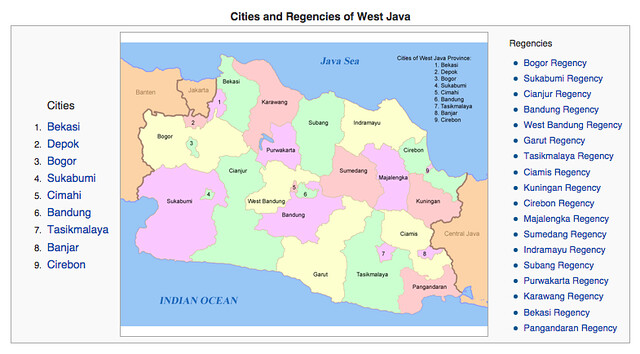
West Java itself can be subdivided into 9 main cities (kota), and 17 regencies (Kabupaten). The cities are Bekasi, Depok, Bogor, Sukabumi, Cimahi, Bandung, Tasikmalaya, Banjar ad Cirebon. On this trip we would explore Bandung, Tasikmalaya, Banjar, Garut Regency and Pangandaran Regency.
Here at 10 Things to Do in West Java, that you should not miss!
1. Catch a Train Ride
There’s a saying that goes, if you want to see the beauty of the land, take a train ride. And this is precisely what we did. From Bandung we caught the Lodaya train ride to Banjar, on route Pangandaran. The Executive Class ticket cost IDR320,000, from Bandung to Banjar. This journey would also bring us a step closer, to our next adventure spot of River Tubing in a village just outside of Pangandaran.
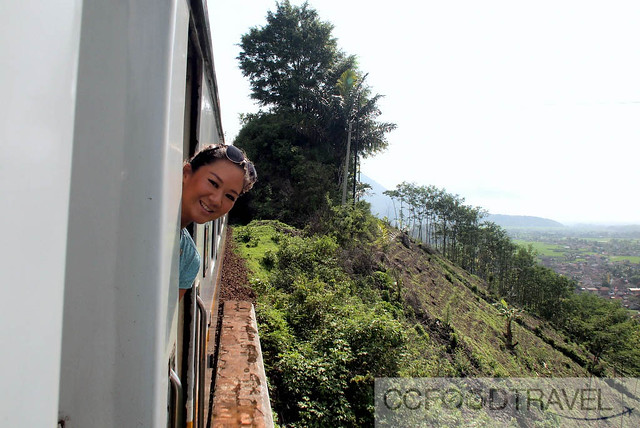
We remember back in the day, almost 8 years ago, when we were backpacking across Java, the trains were in a terrible state. We were impressed with how clean the toilets were this time, and the air-conditioned carriages even had power points for our gadgets. The backdrop was just amazing and we spend ages photographing the ruggard mountains, deep valleys, villages and undulating landscape along the way.
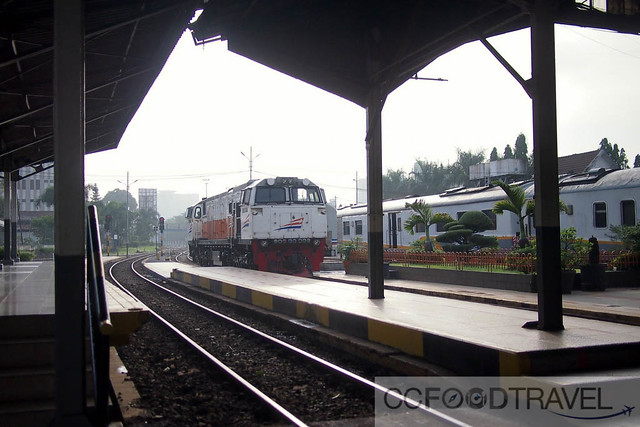
Bandung Railway Station
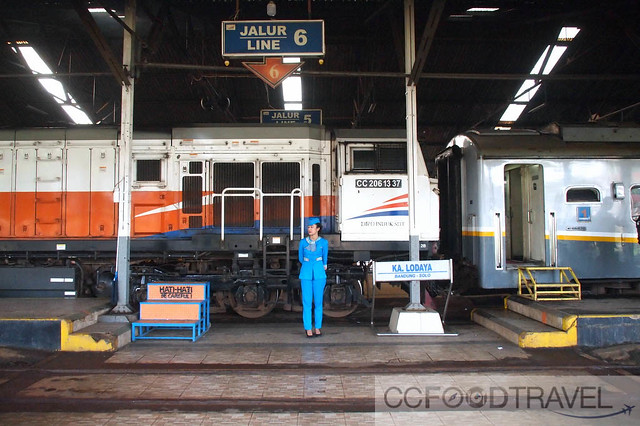
All spruced up and modern – so unlike what we experienced 8 years ago
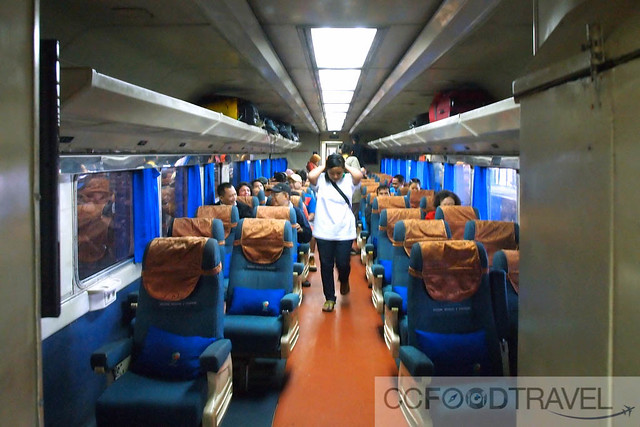
Clean, air-conditioned first class cabins, complete with power points to charge facilitate the charging of gadgets
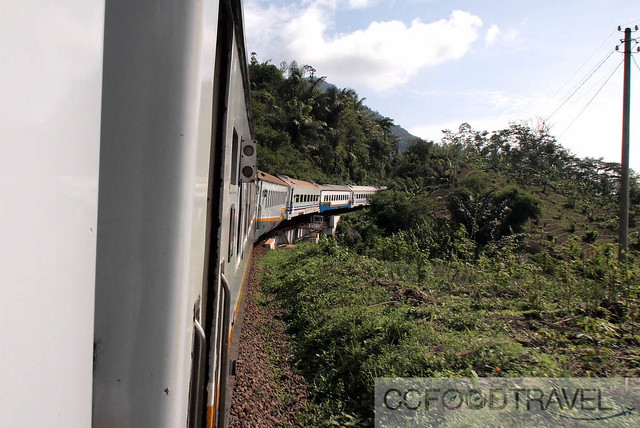
The scenic route to Pangandaran, via Banjar station. This was around a 4 hour journey but the view more than made up the time..
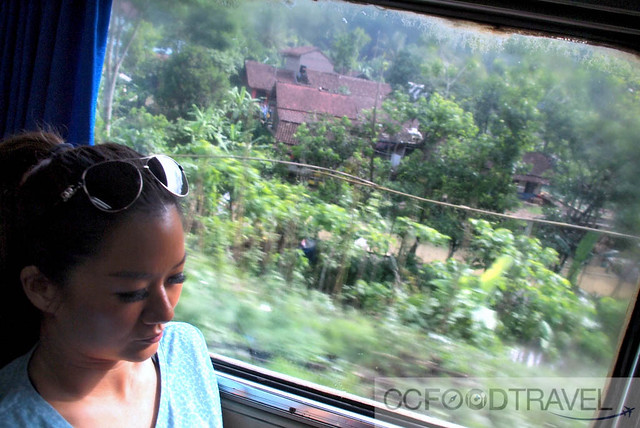
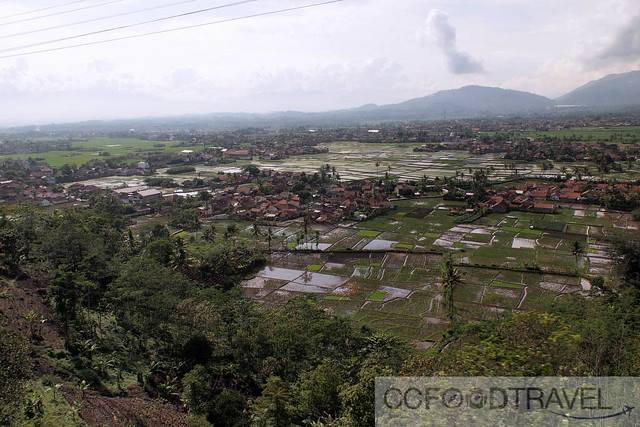
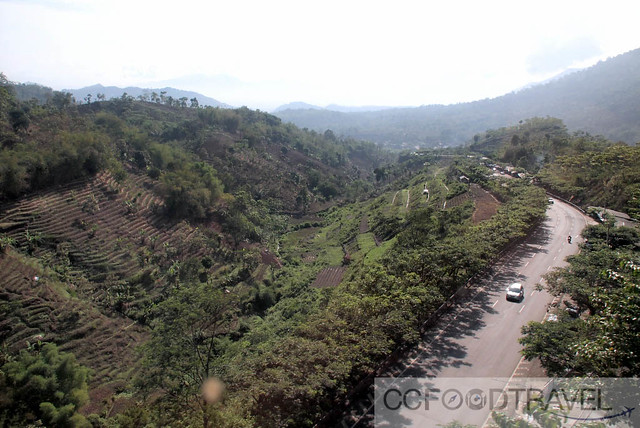


We arrive and Banjar and met this lovely lady selling snacks at the Banjar Station entrance.
Some of us load up on snacks as it would be a further 2 hours or so to Pangandaran from Banjar station, by bus.
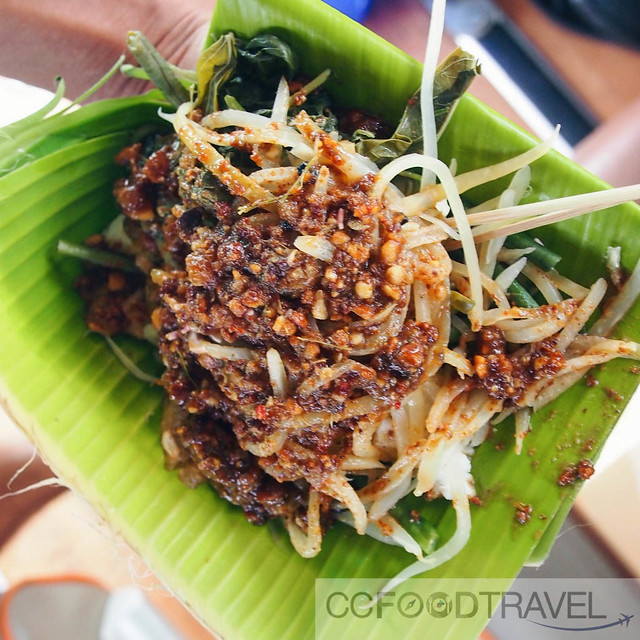
Delicious Pecel sold at Banjar station – a refreshing salad similar the the Malaysian rojak
2. Go on a bike Tour
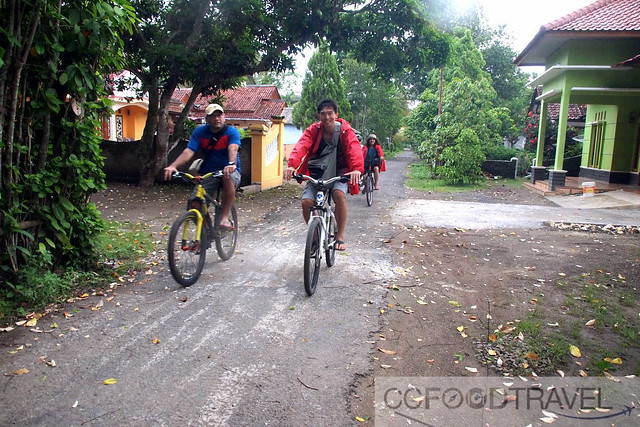
We toured Pangandaran on bikes and visited Desa Pananjung. Bike rentals are fairly cheap at IDR30,000 or so per bike. This scenic bike route brought us to the south coast, and we got to paddle through kampungs and also a fisherman village.
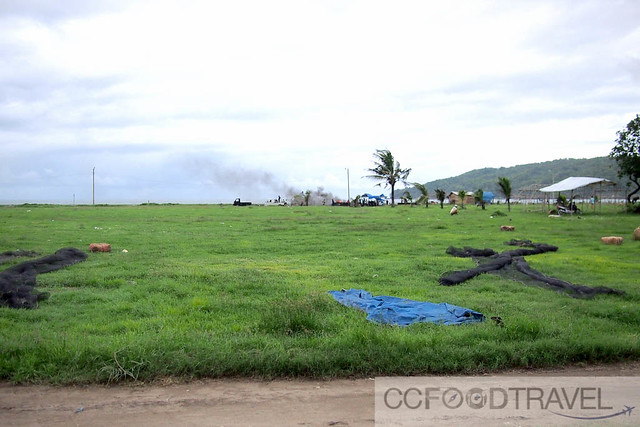
You see the sea on the horizon..
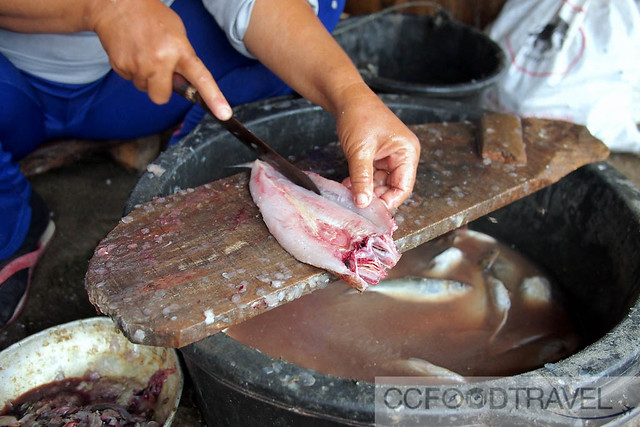
Ladies gutting fish to be dried and sold
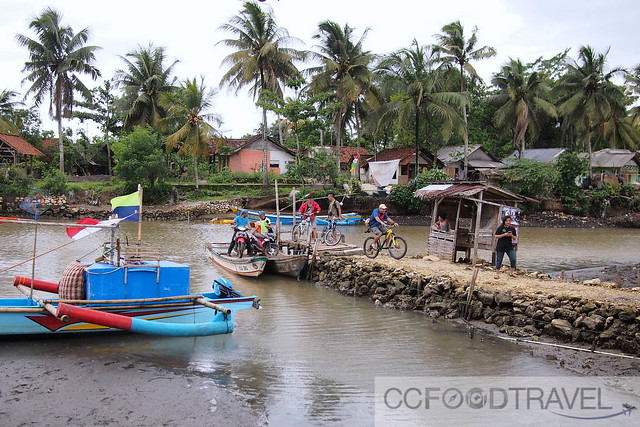
We even did a river crossing, bikes in tow, the old fashioned way.. via a raft and hand-pulley system, which was really cool.
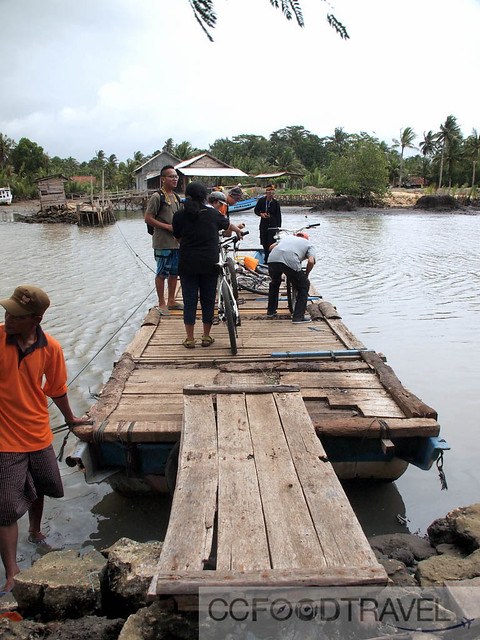
Would you trust this rickety raft to float over with bikes and people on board? As it turned out, it was pretty safe, and we all crossed over without mishap.
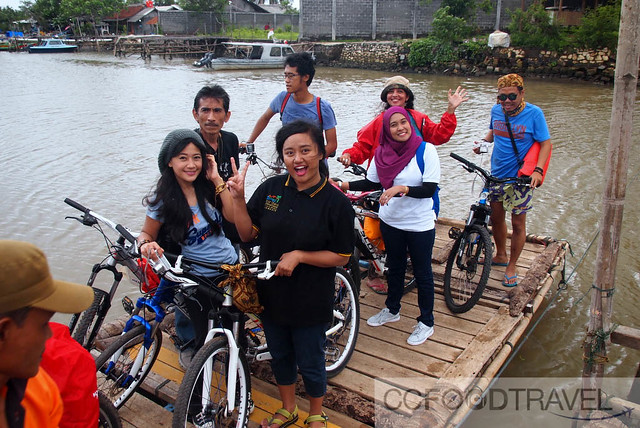
All smiles – arriving intact on the other side!
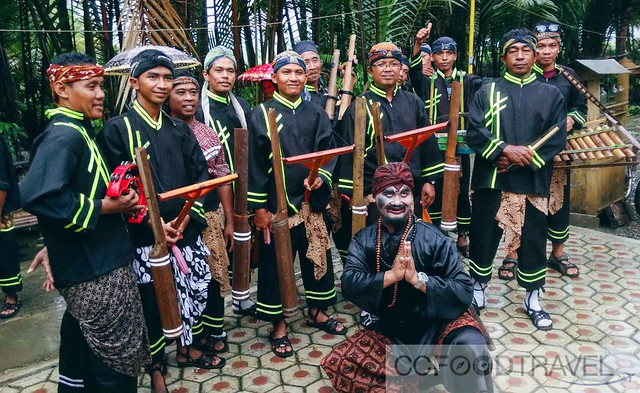
Rombongan Bojong Jati
We eventually reached Desa Pananjung one of the villages in Pangandaran, where we had a great time ‘grooving’ to cool traditional west java music called kentongan, thanks to the very talented Rombongan Bojong Jati group of performers.

Snacks of Bugis, Cucur, Getuk, Dumbeg and Putri No’ong
The hilarious lead singer called the lengser had a great voice and an amusing, expressive face to match! The villagers were lovely and hospitable and even fed us delicious sweet snacks of Cassava and Palm Sugar called Jajanan Pasar – they included, Bugis, Cucur, Getuk, Dumbeg and Putri No’ong – all colourful but not as sweet as they looked.

Lady shows us how they make roofs out of woven leaves

Nipah fruit from the Nipah palm..
The immature fruits of the Nipah are white translucent and hard jelly-like. Called attap chee, they are a common ingredient in local desserts. Refreshing thanks to it’s high water content, and slightly sweet taste.

A man climbs up with no support harness to retrieve the sap from the coconut palm for us to drink. I was expecting a taste like toddy, but this juice was non-fermented.
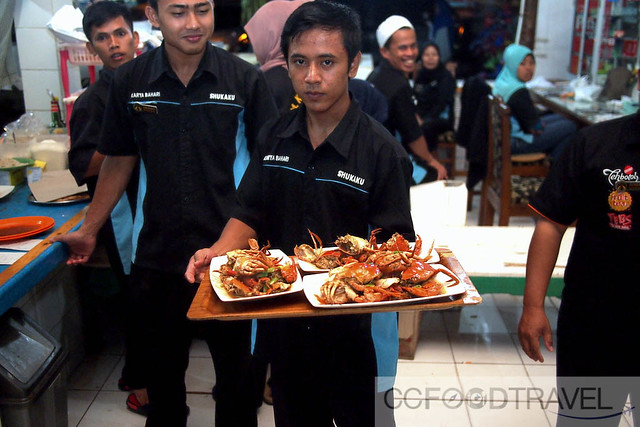
Later that night we had one of the best seafood meals in town. Best damn crabs ever in West Java, and we found it at Karya Bahari restaurant in east Pangandaran. Fresher and tastier than anything we ever had in Jimbaran hands down!
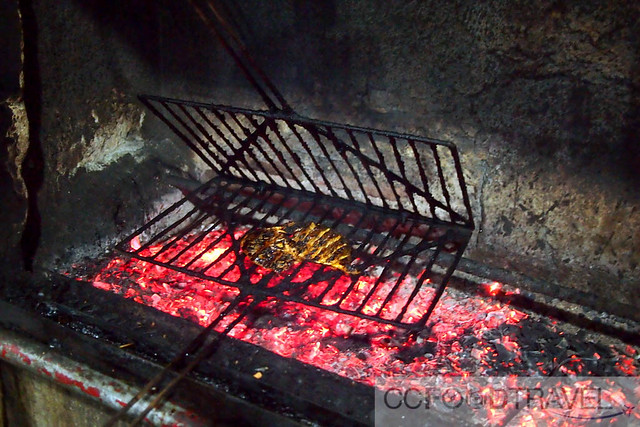
authentic charcoal grill for that authentic smoky charred aroma!
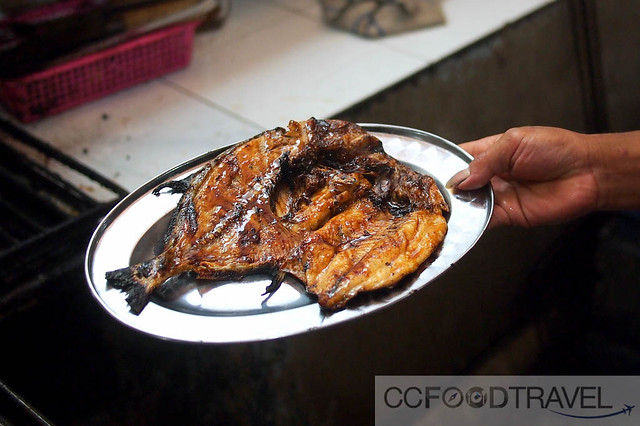
Grilled fish – flayed and grilled evenly on both sides.. this is a must order
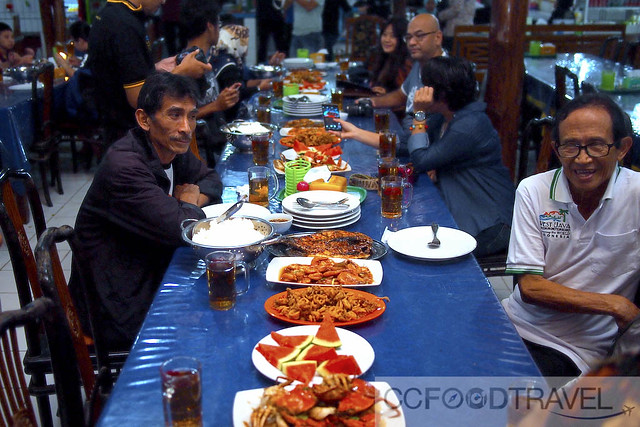
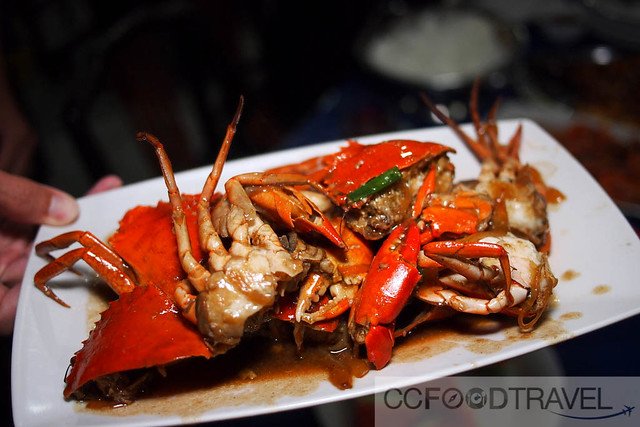
Best crabs in West Java I tell you – they might look small but the flesh is ridiculously sweet and fragrant. It was so fresh that I’ve never had anything better.
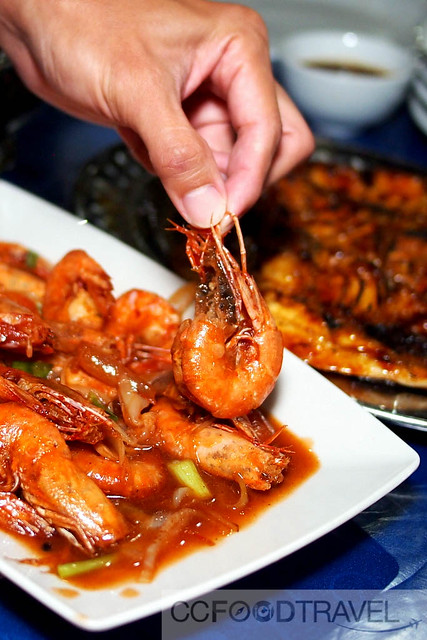
Prawns were OK, but maybe too much sauce

Again, divinely well prepared squid – small yet crunchy and well seasoned, yet with little MSG. Delicious!
3. Go for A River Tubing, Body Rafting and Cliff Jumping Adventure
This was by far, the most awesome activity, in the entire West Java experience.

This place is located just outside of Pangandaran (1 hour) and we used a bus to get there – we passed many rolling paddy fields before we entered a dirt road leading to the start of the river.

photo credit : Cumilebay.com
This two hour experience, would have us floating on emerald green, crystal clear waters, before the next set of rapids and falls that covered a distance of 1.5km. It costs around IDR150,000/person for the adventure.
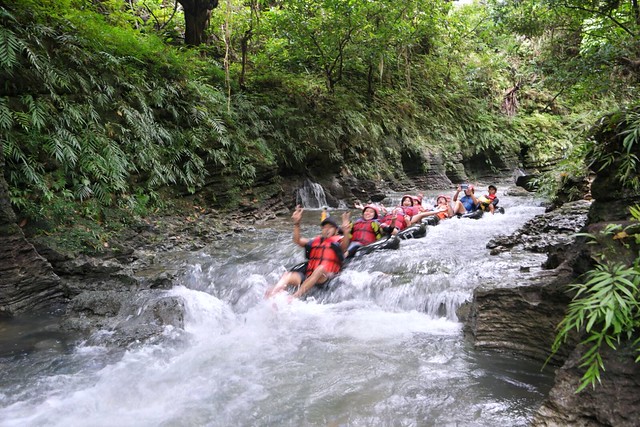
We passed 4 caves and 5 waterfalls at Santirah river – Gua (cave) Gendang, Santirah, Lengkob and Cukang Taneuh, and the Falls were Curug (waterfall) Tirai, Batu Munding, Kembar, Mini and Tiga.
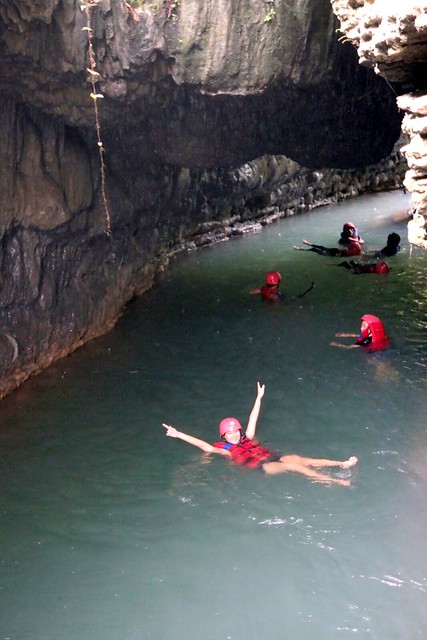
Apart from tubing, there’s also ample opportunity for swimming and body rafting..
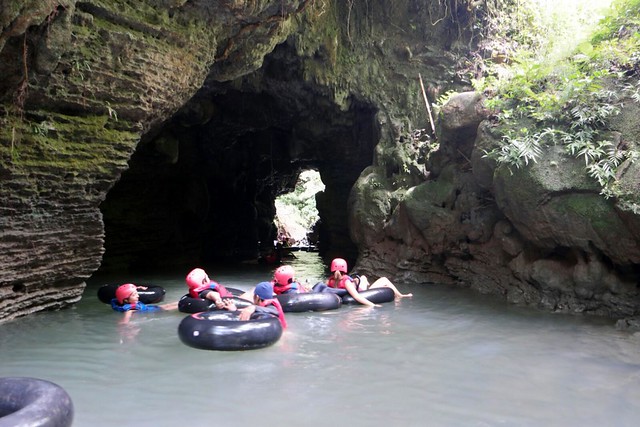
Entering the cave. There were 4 caves in total, and one of them was pitch black – we just had to trust the guides to lead us out to the light!

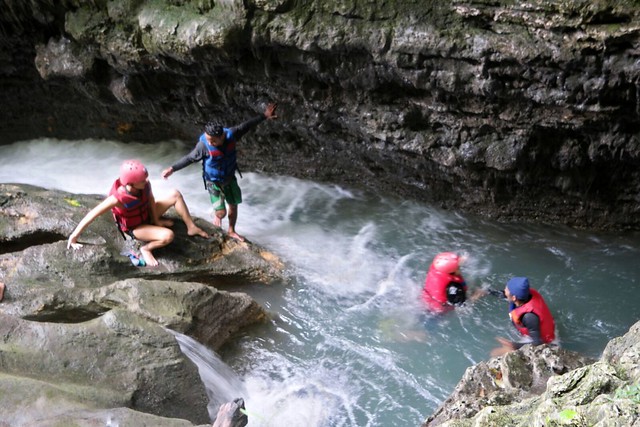
In between, we got to perform a couple of heart-stopping river and rapid crossings (on foot) and also 2 great spots for cliff jumping.
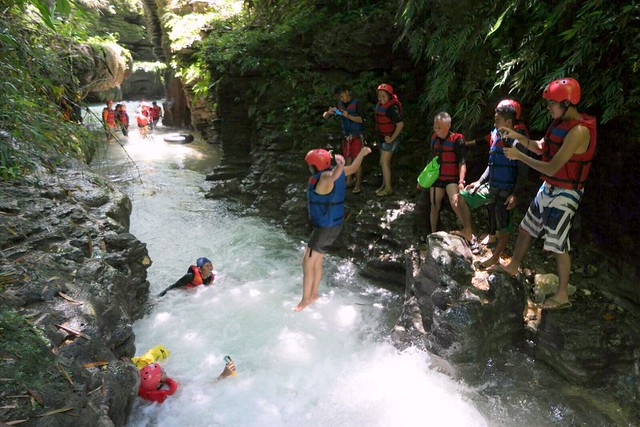
River crossing – fastest way it to jump straight into the rapids & drift with it ..

Cliff jumping!
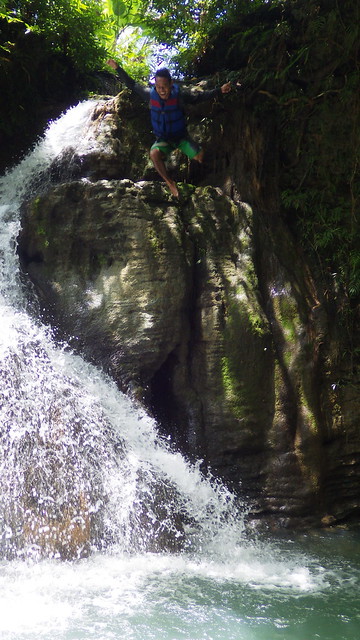
How high dare you go??

Santirah is probably less explored and well known than the body rafting route at Green Canyon, which isn’t too far from this spot.
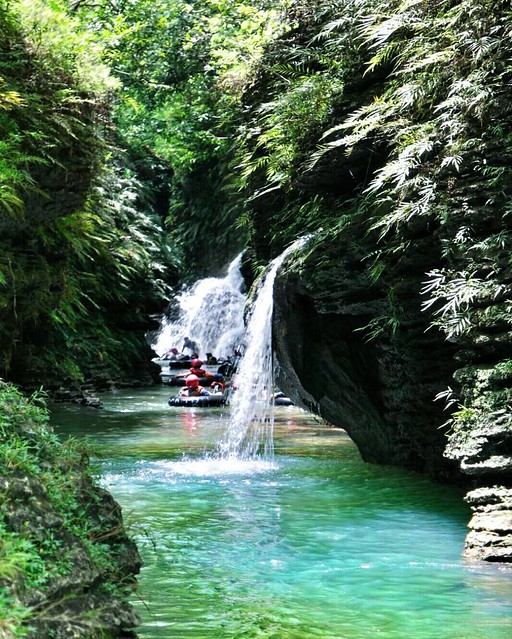
As such, this is definitely a hidden gem of an experience – less mainstream and exhilirating great fun.
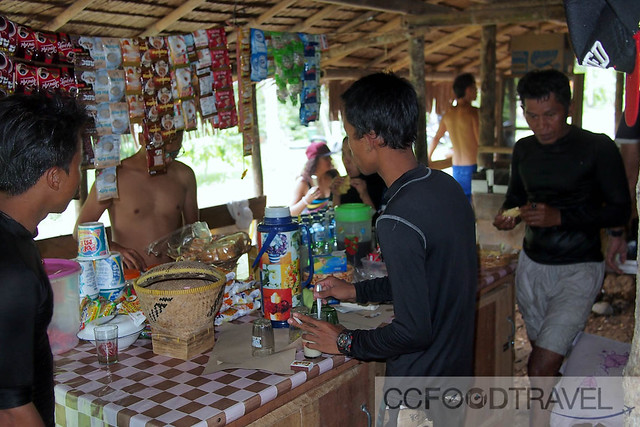
After the adventure ended, we need to hike back on foot 1.5km to where we started, so it is advisable to keep your slippers with you during the adventure.
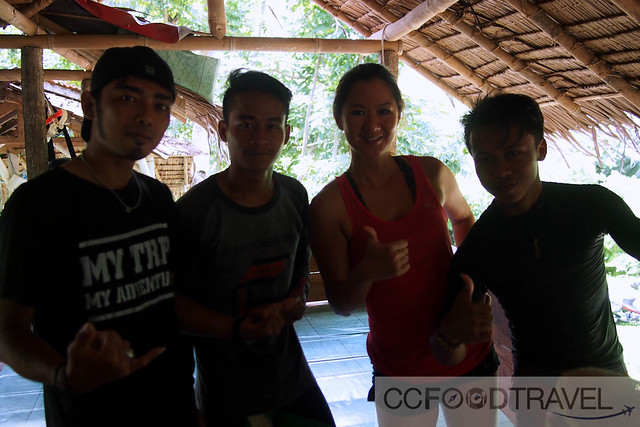
the very skilled guides who took us through the rapids, caves and falls without mishap
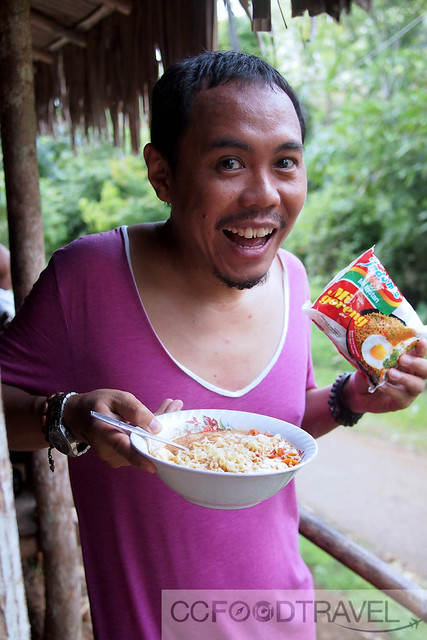
At the lodge, there was food and hot drinks provided to warm us up. Some of us chose to cook indo mee (self service) with a fried egg on top, which turned out to be an awesome post adventure meal.

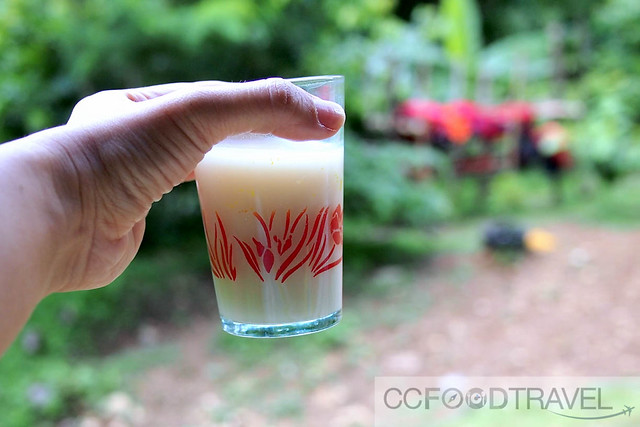
I just ate the gorengan (fried bananas and sweet potatoes) and had some ginger milk (instant powder from a packet) because we were about to have lunch at the next stop in like 30 minutes!
4. Have lunch on the River & Adopt a Mangrove
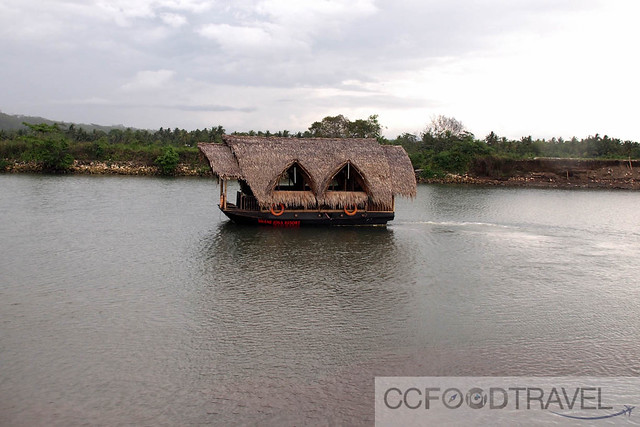
River cruises are always one of my favourites and it’s even better, when lunch is served on board.
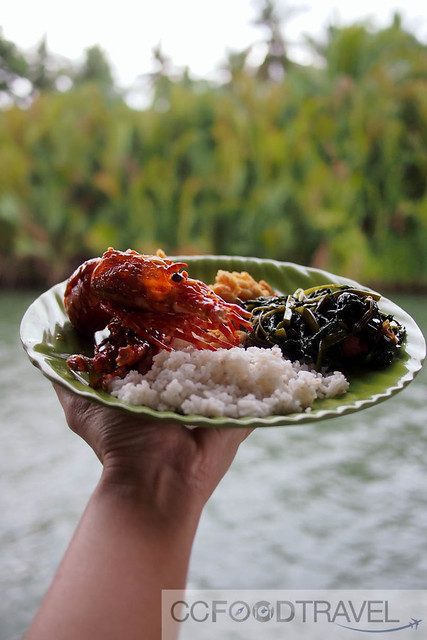
Having lunch on the river, was definitely one of the great highlights of this trip, where we were served a delectable lunch of crawfish and local dishes, whilst enjoying the view as we cruised along the Cijulang River in Pangandaran.
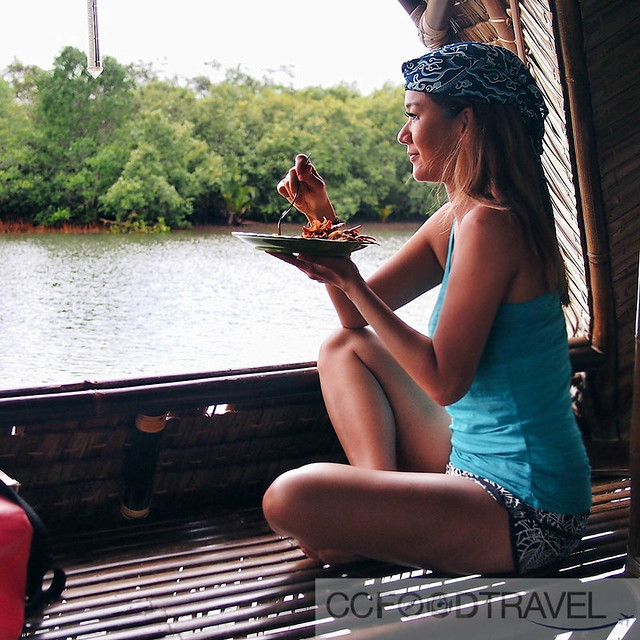
Relaxing lunch with a view .. aaaah this is the life!

Fisherman with his fishing net
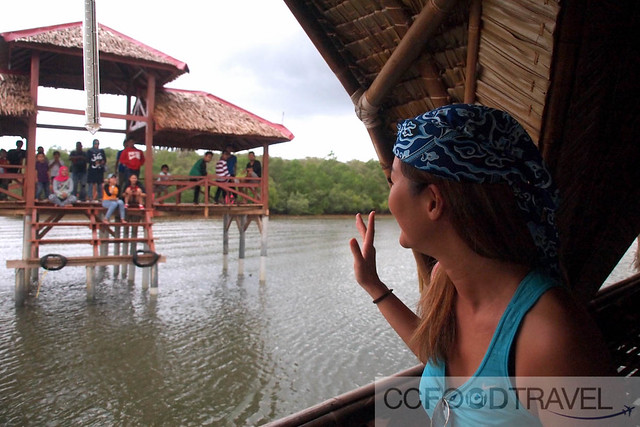
Wave to the people
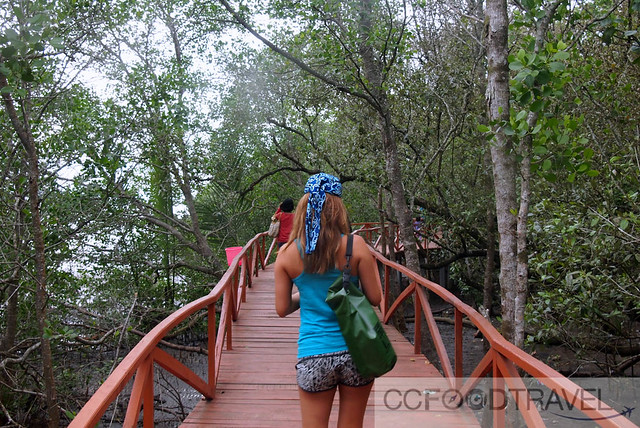
This boat cruise brought us to a mangrove swamp, where we really got muddy with the next activity.
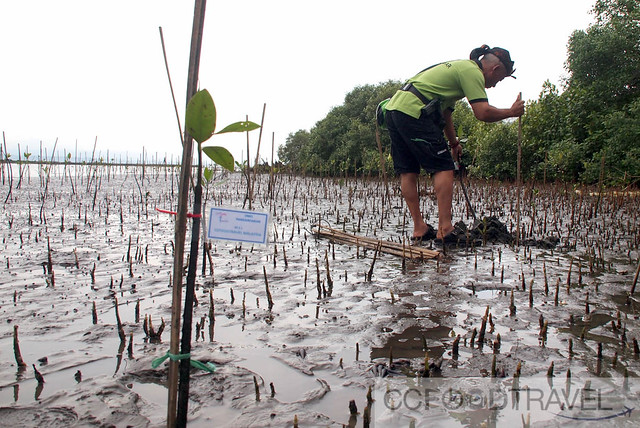
This initiative is called “Adopt a Mangrove” and here’s us, doing our bit for environmental conservation. Pangandaran has various ecosystems, mostly in good condition, except for the coastal ecosystem which was damaged by tsunami in 2006.

At that time, Pangandaran was almost completely destroyed by a massive tidal wave, with great loss of life. Since then, local residents understand the vital importance of actions to mitigate the consequences of climate change.
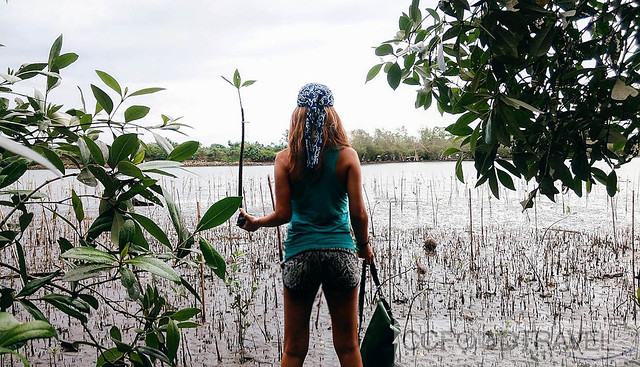
Replanting the mangroves is one of the CSR initiatives of the Pangandaran DMO (Destination Management Organisation) alongside the Tourism Ministry of Indonesia. We thought that this was an awesome idea, and we felt privileged that we got to lend a helping hand by planting a baby mangrove plant, and it was planted in CCFoodTravel’s name too, which was really cool.
5. Drink Honje & Eat Nasi Liwet
We found a nice spot on Batu Karas Beach, that served the Honje fruit (pronounced hon-gee), from which the delicious, salty-sweet, sour-tart and aromatic Honje juice comes from.

This is the pride of Pangandaran folks and I can see why – It comes from the honje fruit and is fabulously refreshing when drunk cold.

Some folks don’t like the weird salty sweet flavour that reminds me of the bunga kantan aroma but I loved it! I drank 2 glasses of this easy, after river tubing on Santirah river.
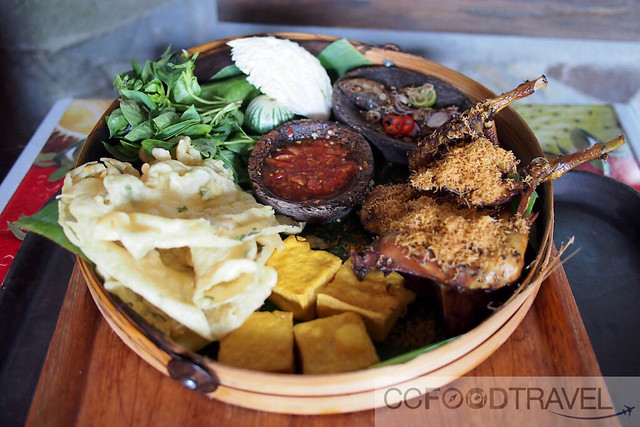
Then there was the matter of Asep Strawberry restaurant at Tasikmalaya and also Garut. A rather hard to miss chain of restaurants, and you will soon see why. We stopped here to try the famous Nasi Liwet.
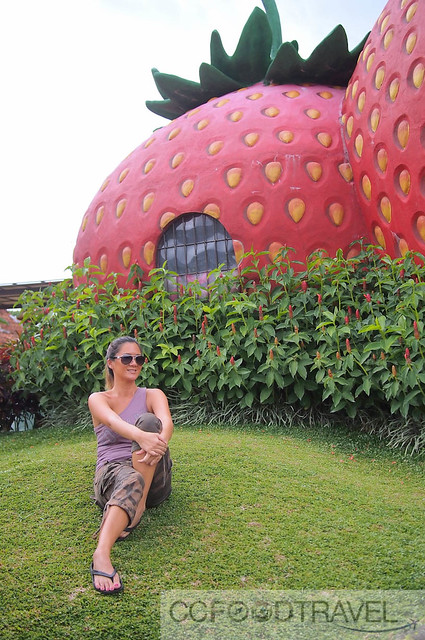
Don’t laugh, but the Strawberry, is their mascot, and forms the facade of the restaurant. Slightly tacky but the food’s actually quiet good.
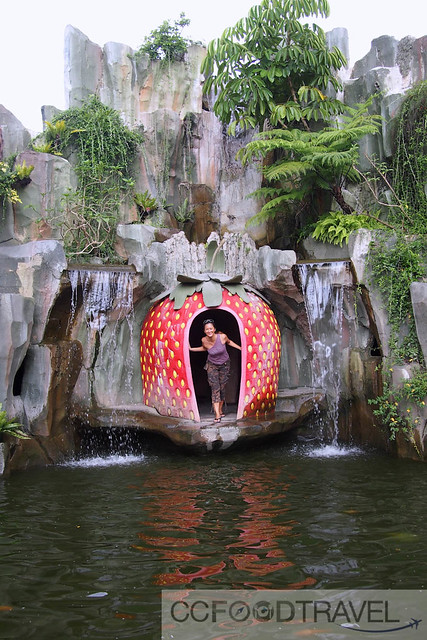
irresistible cheesiness and photo opportunities with the strawberry everywhere! 😛
We’d say that the quality of food is acceptable here, but they do use a lot of salt and MSG.
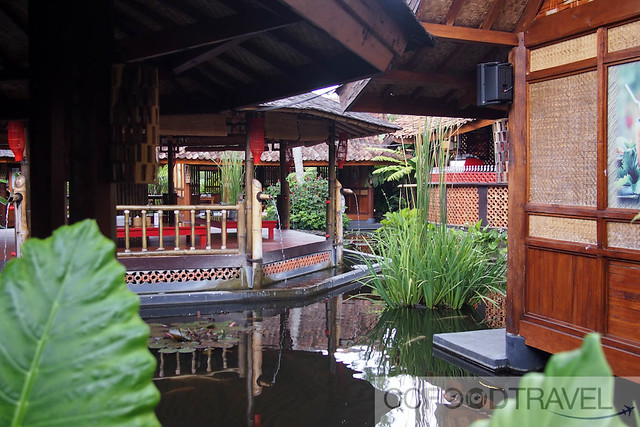
Apart from that the dishes were interesting. The restaurant has two areas – the one with standard tables and chairs and the area where you sit on the floor with cottages overlooking nicely landscaped ponds. We chose a cottage for a more traditional vibe.

We ordered standard Sundanese favorites.
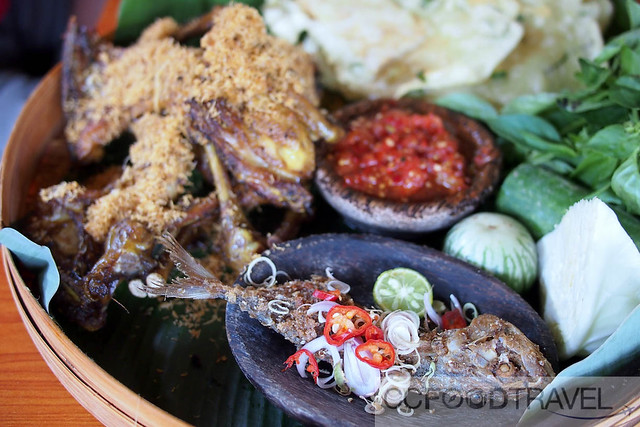
ikan asin – goes great with rice.
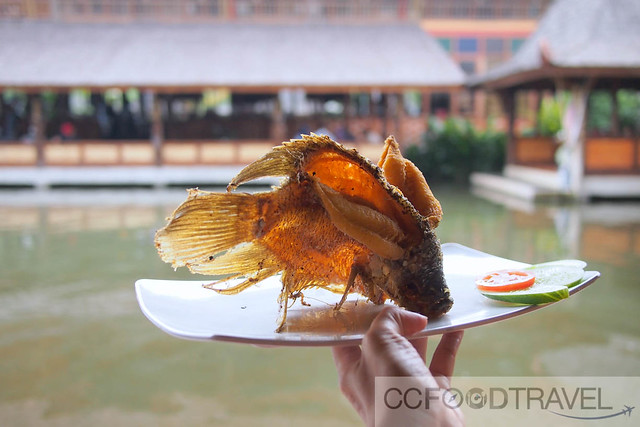
The standouts were the fried tempeh, otak-otak, ikan asin, fried fish, ayam goreng drizzled with desiccated coconut, eaten with the fragrant nasi liwet.
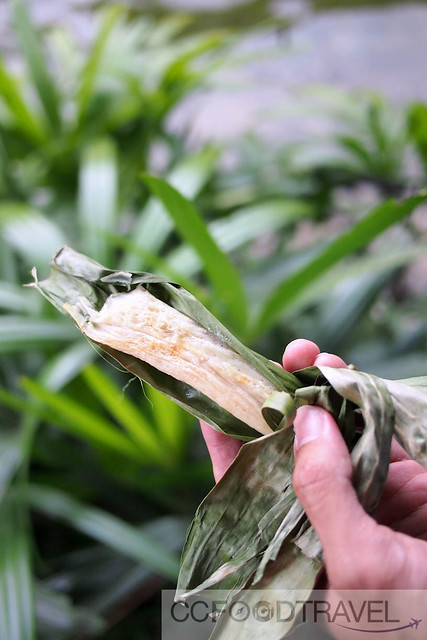
otak otak

Nasi liwet is rice cooked in coconut milk, chicken broth and spices, salam leaves and lemongrass, thus giving the rice a rich, aromatic and succulent taste. This style of cooking originated in Solo, Central Java, Indonesia.
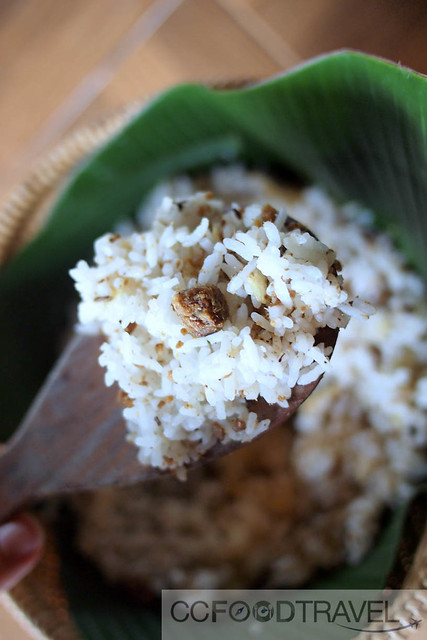
Another great kind of rice they serve here is the Tutug Oncom rice – rice mixed minced meat & herbs that was equally sublime! Also, my first time trying the infamous kopi luwak here.
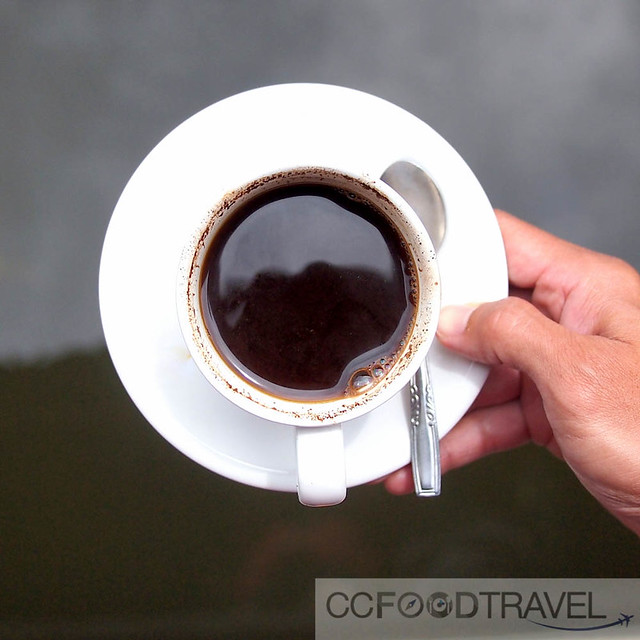
kopi luwak
Strong yet smooth and full bodied, this coffee is the shits! (yes, literally) Kopi luwak, or civet coffee, refers to the coffee that includes part-digested coffee cherries eaten and defecated by the Asian palm civet. There are varying grades and the more expensive the better. Now you know how it’s made. Would you drink it? I actually loved it just black and w/o sugar. It was delicious!
6. Witness the Kuda Lumping
Now this was a dark, mysterious and heart thumping performance called the Kuda lumping and debus.

Kuda Lumping is a trance like performance, that has its ancient roots in pre-Islamic Indonesia. Originally thought to be a re-enactment of wars long past, it is the artistic expression, in dance and music, of people from the kampung (village). It is often performed to celebrate circumcisions and to mark personal and community achievements.

Live orchestra
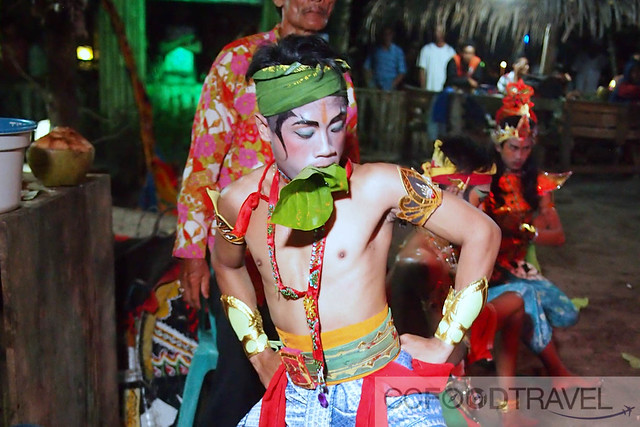
During Kuda Lumping, performers eat glass, walk on nails and knives under possession of the devil. It is something like the Kuda Kepang in Malaysia, but much more theatrical, entertaining and even scary, once the possession takes full swing.
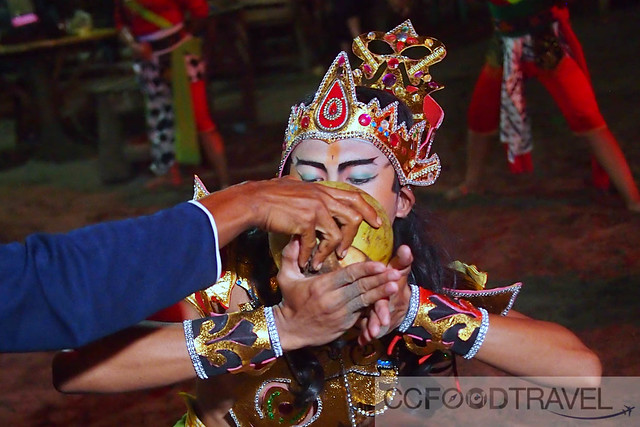
Under possession, the men eat raw leaves and drink copious amounts of liquid, as if they are unaware of what’s going on…
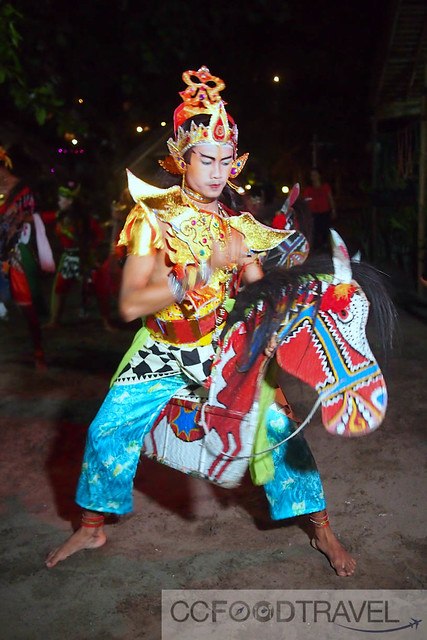
Performers are typically young male, who, as they are dancing, become immersed in the repetitive beat of accompanying music, and build towards a trance state. In this trance state, a door is opened to the spiritual world and the dead enter the bodies of the performers. As participants become possessed, they perform physical feats of strength, such as eating glass, walking on coals, or whip each other but not feel a thing. 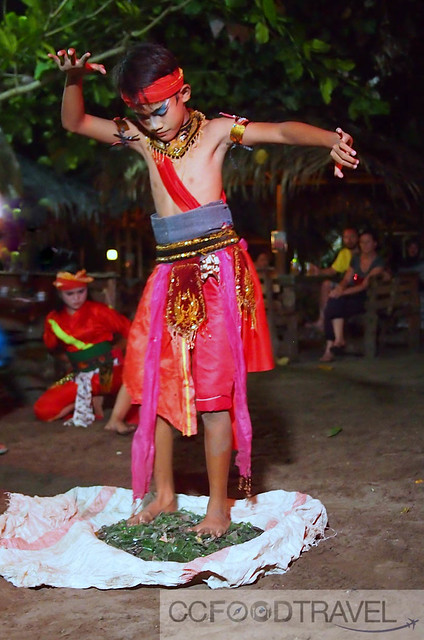
Walking on glass..
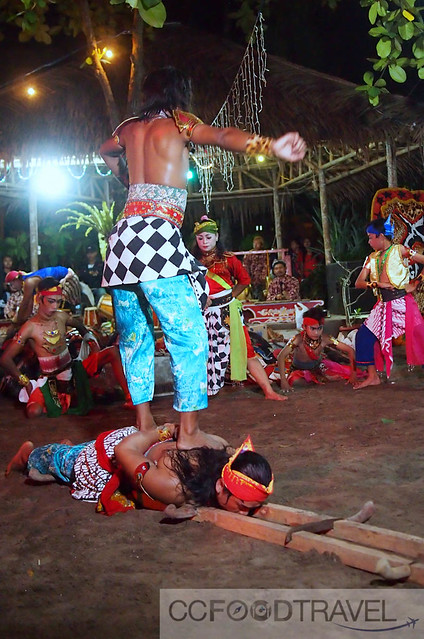
Walking on a man on knives!
The performers eat raw leaves, glass, cut themselves with blades, etc while under a trance and don’t even notice nor feel a thing. Apparently they report feeling exhausted once they come out of the trance but they don’t remember what happened.

Cutting themselves with knives and blades
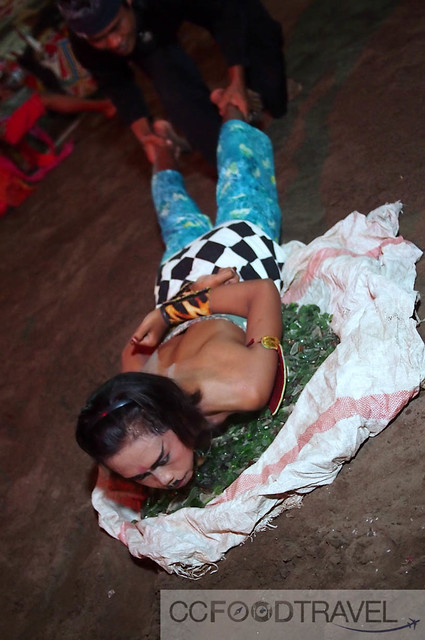
This man ate the glass, before his body was dragged repeatedly over the jagged shards

A rather bizarre journey into the dark-side for sure, but nonetheless entertaining.
7. Explore arts and craft
We visited Tasikmalaya, and went to Centra Kelom Geulis, a traditional Sundanese wooden shoe maker. They have more than 100 designs of traditional clogs available at Sagitria Collection on Jalan Dadahar.
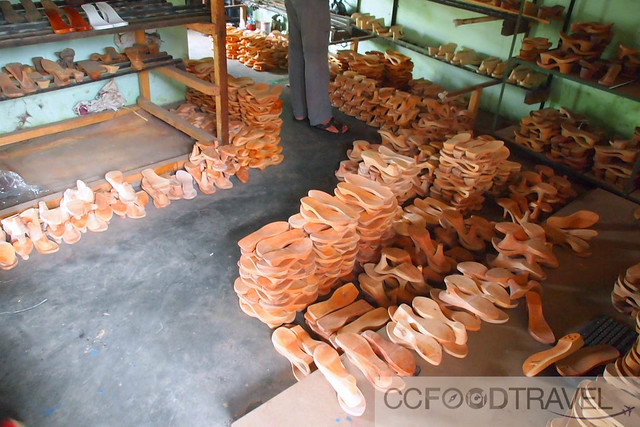
“if the shoe fits.. “

traditional way of clog making.. more pain-staking but the designs are definitely more beautiful
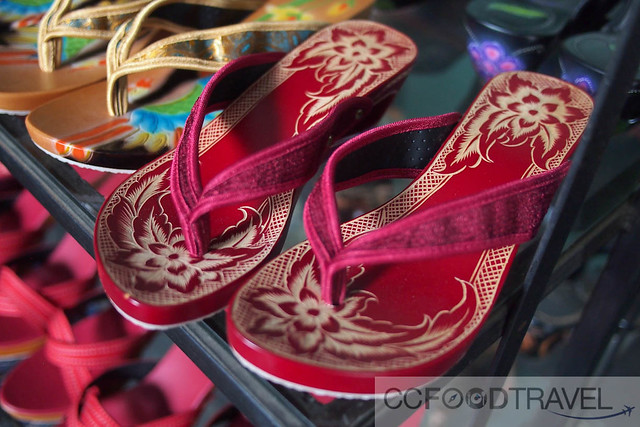

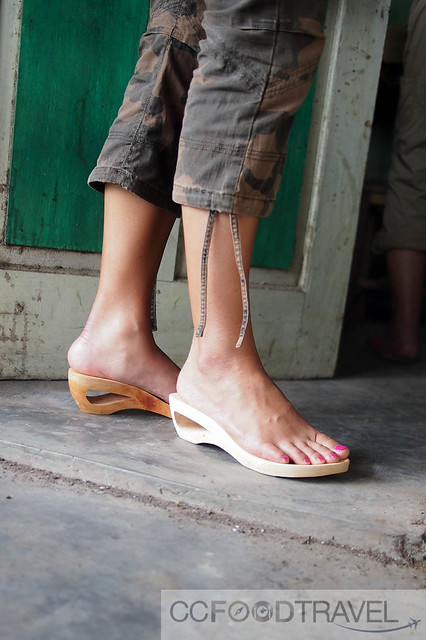
This isn’t the way to try on shoes actually 😛
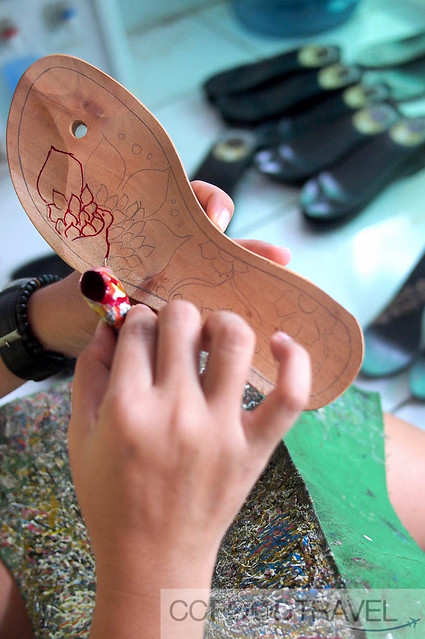
we even had a hand at designing our own clogs!
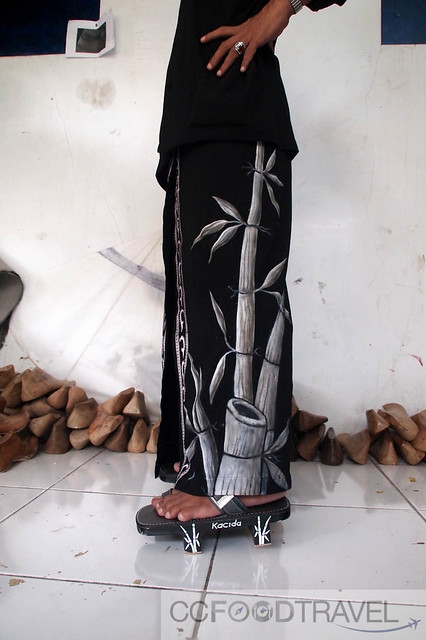
Even men’s clogs are fashionably hip and happening!
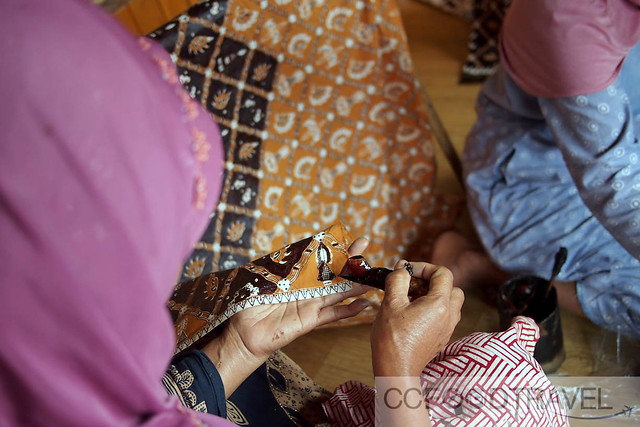
When we were in Garut, we had a chance to see first hand how batiks are made, from start to finish. The final result was beautiful traditional hand-drawn, Sundanese Batik for both men and women.

these batik ladies had really steady hands and colored out lovely prints and designs with hardly any errors
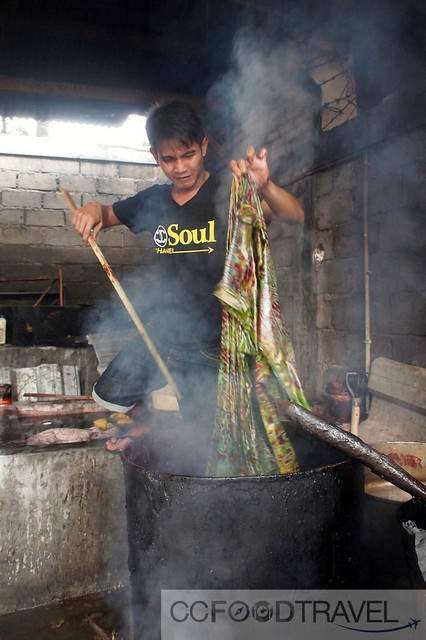
boiling the wax from the batik cloth

8. Emerse in the deep heritage of the Kampung lifestyle
Again we visited in Tasikmalaya Regency, one of the oldest villages, called Kampung Naga.
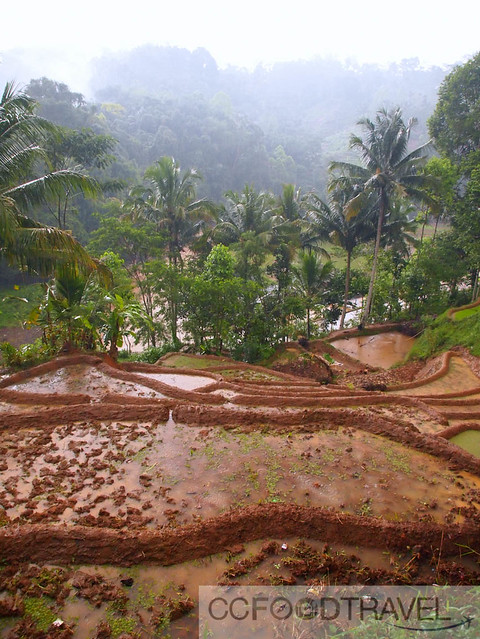
Kampung Naga is a village which is inhabited by a community in a very strong tradition of holding the remainder ancestors.
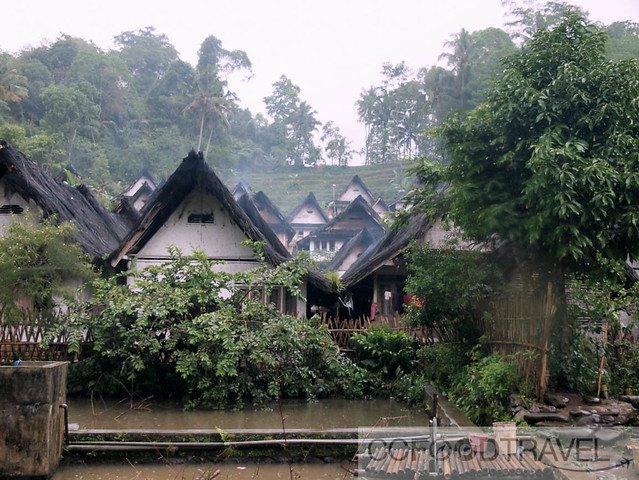
The differences are visible when compared with other communities outside Kampung Naga. The community are living in the framework of an atmosphere in a traditional simplicity i.e. without electricity.

The villages are located 400 steps below, in a fertile valley – in the south is the rice fields, and in the north and east are surrounded by river Ciwulan, which the source of water comes from Mount Cikuray in Garut.
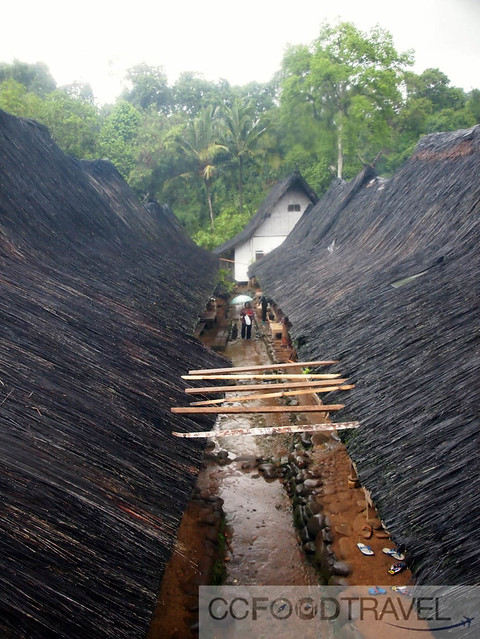

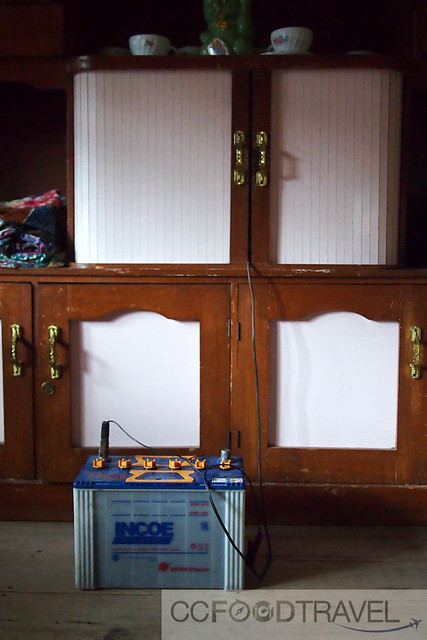
The distance from the town of Tasikmalaya to Kampung Naga is approximately 30 kilometers, while the distance from the city of Garut is 26 kilometers. It was the government who provided concrete steps which connected the village to the outside world and battery powered radios for the homes.
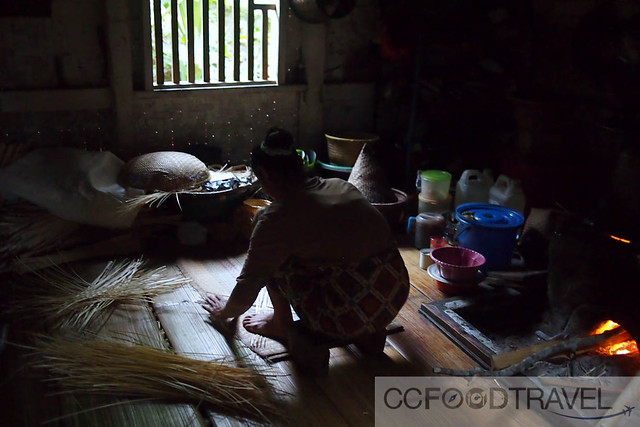
We were invited into one of the homes.. here we watched a lady weave mats for sale later in the city.
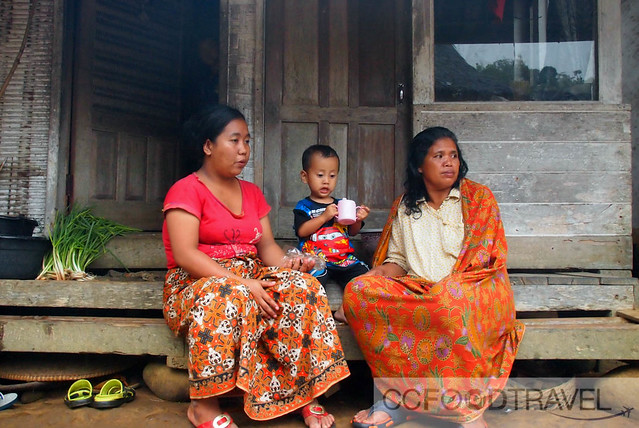
Kampung life at its best

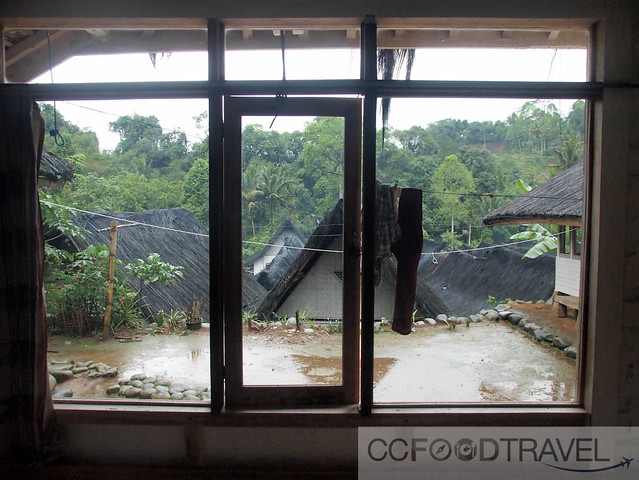
Soon the rain relented and we got to explore more of Kampung Naga..

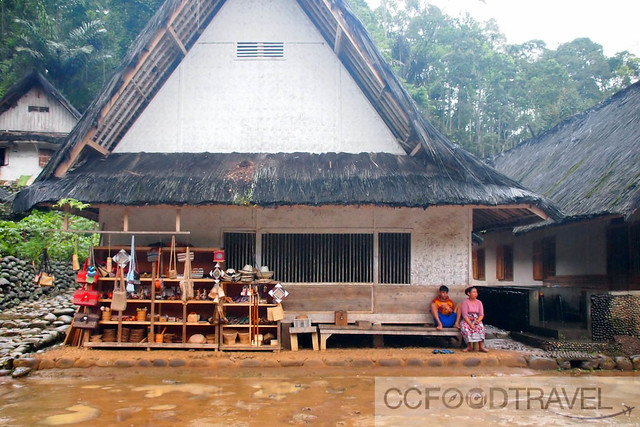

Banana leaf umbrella!
9. Explore Gedung Sate & the Museum of Asia Africa
Gedung Sate, finally! This was my 3rd time to Bandung and I finally got to enter this famous building built in 1920.

And in case you’re wondering, the reason they call it ‘satay building’, is because of the shape of the building’s central pinnacle – which resemble the shape of one of the Indonesian traditional dish called satay.

During the Dutch colonial time, Gedung Sate was known as the Gouvernements Bedrijven or GB. Many architects and structural designers say that Gedung Sate is a monumental building that personifies Indo-European architecture.
If you look at the facade – you will notice the Buddhist center design, the Western Roman pillars, and finally the Indonesian design. It’s kind of like a hybrid of architectures.

Dutch designed, neo-classical and once the seat of the Dutch East Indies department of Transport, Public Works and Water Management, it now serves as the governor’s office of the West Java province in Indonesia. The offices of the governor and vice-governor are located at the second floor of the building.
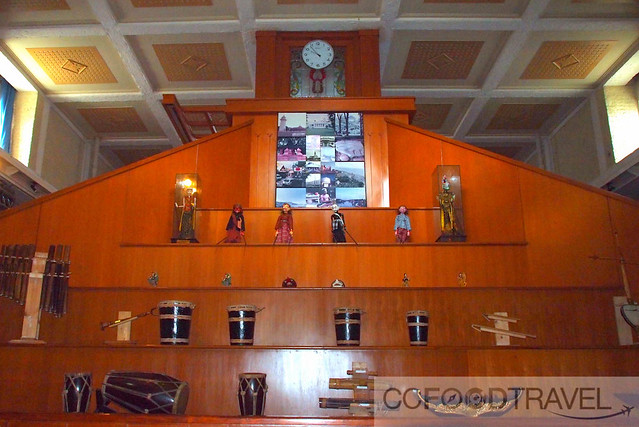
The most eastern and western parts of the building have large rooms which can be used as ball room like they were frequently built by Europeans at the time. The room is currently more frequently used as the eastern and western aula, which are often used for formal events. The uppermost floor is called the Tower of Gedung Sate.

This floor can not be seen from downstairs. To reach the floor you have to use the old wooden stairs or a modern elevator.

On the top floor, there’s a lovely balcony that goes right round the building. The view of of the mountainous backdrop is breathtakingly gorgeous from here.
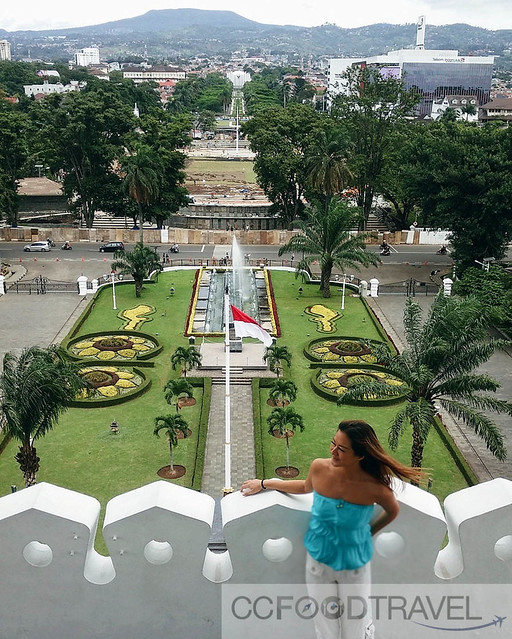
Tangkuban perahu, as seen from Gedung Sate, Bandung. That mountain in the background that literally looks like an overturned boat, is Tangkuban Perahu, a volcano 30 km north of the city of Bandung.
After that, it was time to visit, the Asean African Conference Museum…
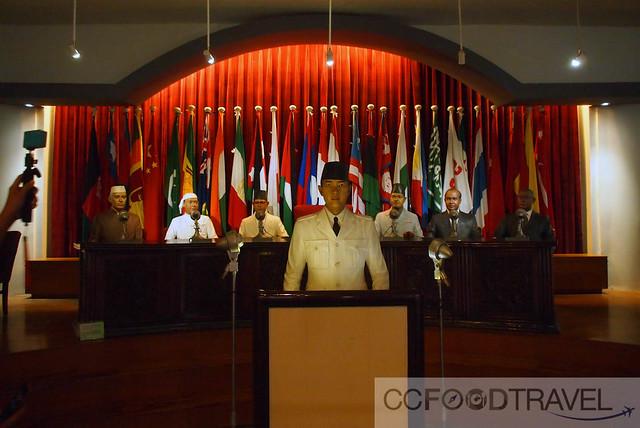
The historic first Asian African Conference was convened here in the “Gedung Merdeka”, Bandung, West Java, from 18th to 24th April 1955, a recognized milestone in world history, and so if you ever wanted to know more about the Asia Afrika Conference that took place in 1955, this is the place to visit.
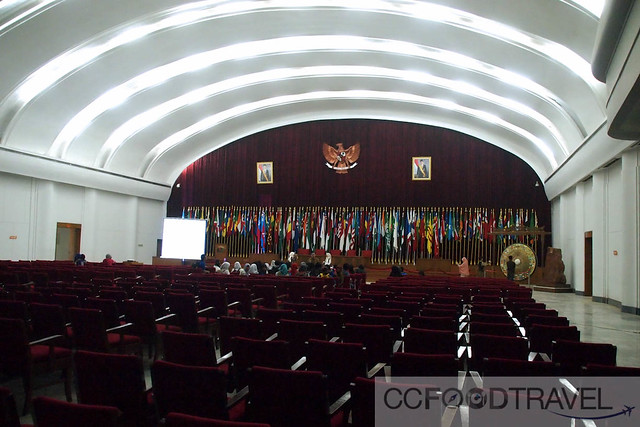
This was the first time that 29 Asian and African countries, most of whom had just gained their independence from centuries of colonial rule, gathered to join hands to determine their own future. Together they covered a quarter of the world’s land surface with a total population of 1.5 billion people.

Initiated by Indonesia, Burma (now Myanmar), Ceylon (now Sri Lanka), Pakistan and India, other countries participating were – Afghanistan, Cambodia, the People’s Republic of China, Cyprus, Egypt, Ethiopia, Iran, Iraq, Japan, Jordan, Laos, Lebanon, Liberia, Libya, Nepal, the Philippines, Saudi Arabia, Syria, Sudan, Thailand, Turkey, the Democratic Republic of Vietnam (North Vietnam), the State of Vietnam (South Vietnam), and Yemen. The Museum is open Mondays through Fridays from 08.0 am to 03.0 pm Western Indonesia Time.
10. Watch an Angklung performance & Shop till you drop at Pasar Baru Bandung
If you’ve always been mystified by how the Indonesians make music from merely shaking some sticks of bamboo, then you best pay Saung Angklung Udjo (SAU) a visit.
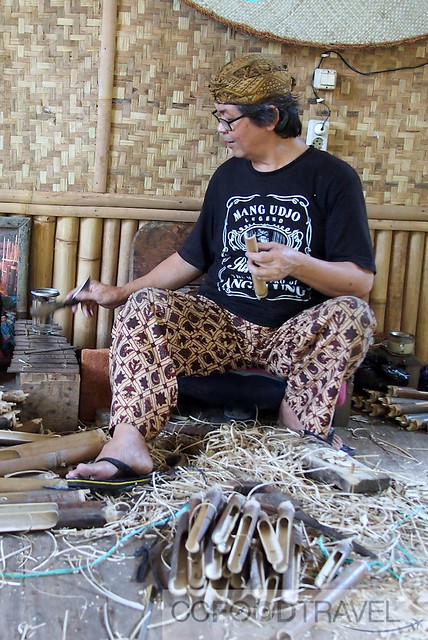
the angklung maker.. explains how you make notes, by shaving the bamboo sticks. He uses a xylophone to tune his bamboo
Angklung is a rattle like musical instrument made out of two or more bamboo tubes attached to a bamboo frame. The tubes are carved so that they have a resonant pitch when struck. The tubes are tuned to octaves or making chord. The base of the frame is held with one hand while the other hand shakes the instrument rapidly from side to side. This causes a rapidly repeating note to sound (tremolo).
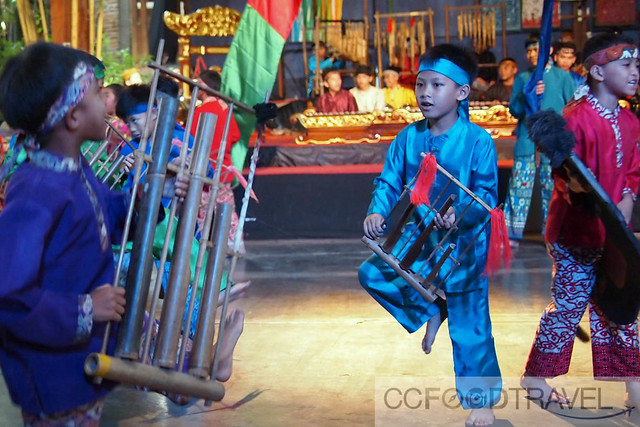
Established in 1966 by Udjo Ngalagena and his beloved wife Uum Sumiati, by a strong purpose and dedication to conserve and preserve Sundanese traditional art and culture.
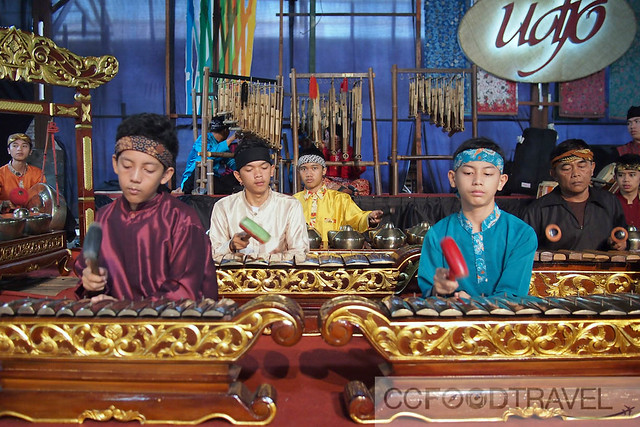
I mean, these guys can even play the Bohemian Rhapsody with the Angklung – that’s how talented they are. SAU is the place to catch kids and adult Angklung orchestra in action. You can also witness bamboo handicraft here and sign on for a bamboo instrument workshop.

According to folklore, angklung was a musical instrument of agricultural festivals and was also used during the festivities to arouse the fighting spirits of soldiers. It was also associated in Java with kuda lumping dancing tuned to the traditional pentatonic scale.
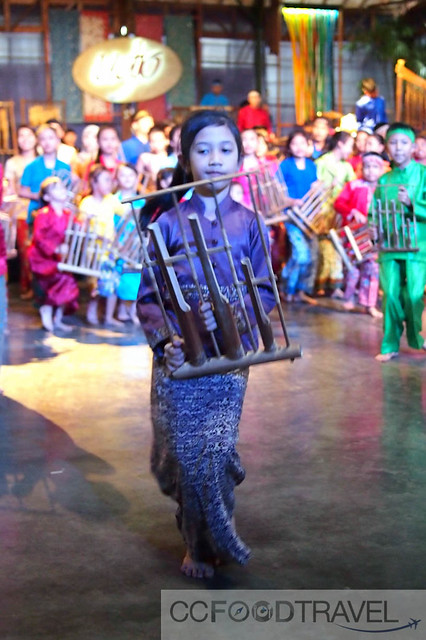
Indonesia is the birth place of Angklung, (used and played by the Sundanese since the ancient times), and the word “angklung” was originated from “angkleung-angkleungan”, that means the movement of angklung player and the sound “klung” that comes from the instrument.

Initially called simply Pasar Baru or the New Market, it is actually the oldest operating marketplace in the city of Bandung.
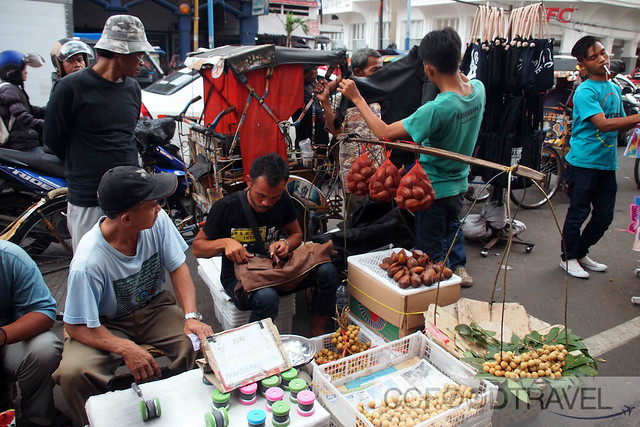
Built in 1884, the original Pasar Baru Market replaced the Ciguriang commercial area, and now this area is just a hive of activity. It is so packed with people that at some spots you can hardly walk. Many folks resort to walking on the main road alongside the traffic to avoid the congestion.

“the shoe princess – sitting on a mountain of rubber shoes.. waiting for prince charming to arrive!” 😛
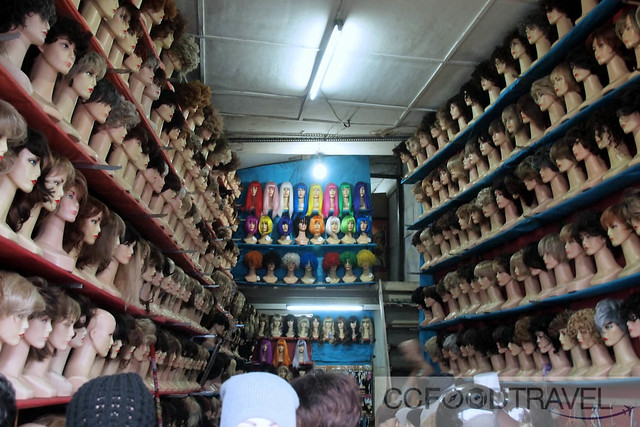
This place does not sell branded labels but what you will find is a whole myriad of rather cool textiles products such as t-shirts, pants, dresses, to be distributed and sold in other parts of the country.
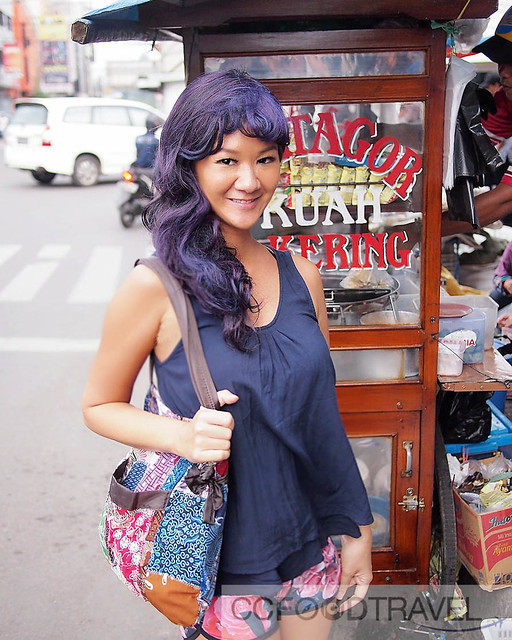
We loved the crazy wigs sold here – such fun colors and styles. The market is also known as the best place to hunt for special Muslim wear, such as hijabs, fashionable Muslims ladies clothing, and others.
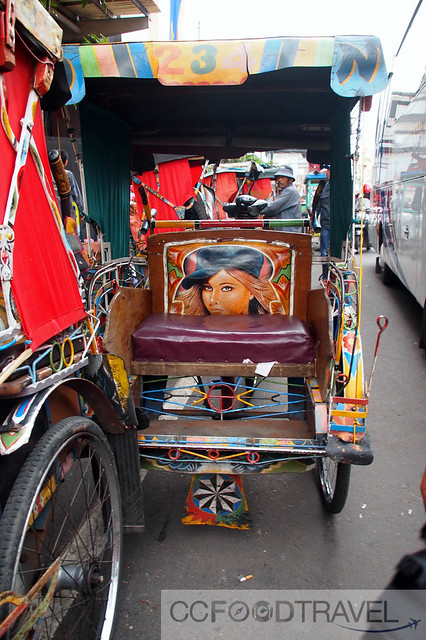
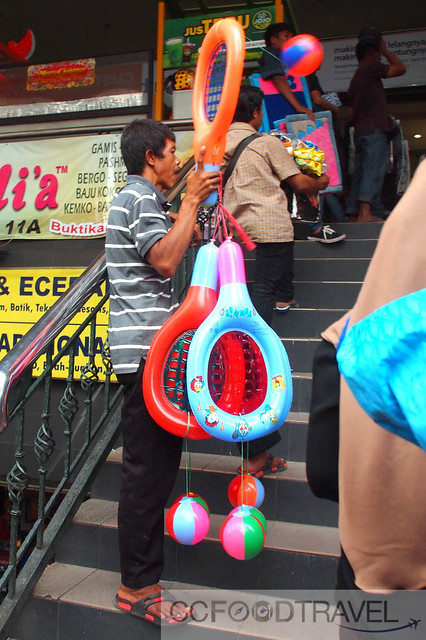
All kinds of everything are sold here. Visitors can also browse through the vast selection of Sundanese authentic snacks and tidbits such as dodol garut, banana sale, Tempe crackers, and others, at the many stalls lining up on the façade of the ground floor. All at incredibly cheap prices.
And that concludes our TOP 10 PICKS for West Java!
This trip was sponsored by Tourism West Java. CCFoodTravel maintains full editorial control of the content published on this site as always.
For a complete account of our trip across West Java in 6 days, watch the video by my buddy & videographer, Bram, here :




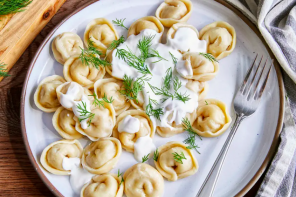

Awesome post! had no idea there was so much to do in West Java. will definitely put it on our family’s places to visit for next year. do you recommend the dry season or wet season to go?
Well, we have been in both wet and dry season – we prefer dry of course. But either way is fine – the wet season is cooler, but you need to take more care with/keep your gear (like cameras) etc, dry of course..
Santirah rvr looked like a blast. Adventure sports is our thing. will be in Bandung mid next year so will definitely look to extend and visit the region on West Java and to river tube santirah of course! great tips. keep it up CC!
Aww, thanks! And great, we hope you have a terrific adventure. Let us know if you need more tips – you can write us on our email. Cheers!
So yammy I want to eat nasi liwet! food is sooo good looking.. I want to go!
LOL, yes West Java has amazing food. Don’t forget to try the Honje drink too if you get to Pangandaran!
Train rides, waterfalls, great food! Just so many wonderful things here! Thank you so much for this lovely tour!
Thanks! LOL.. Glad you enjoyed the ride!
Never been to Indonesia other than to Lake Toba a long long time ago. Sure would love to go over…for the food! LOL!!!
The food is great and so are the people and the attractions.. food, culture, heritage.. all rolled in one!
it’s clear that you’re having a lot of fun here … maybe too much fun, haha! especially with the river tubing and body rafting 😀
One can never have too much fun! hahaha
would love to bring my own MTB for such kind of adventure, looks fun!
For sure! Absolutely thrilling!
Aku suka honje haha tp aku tak diajak ke pasar baru ihik ihik
Because you hate shopping, that why!! LOL 😛 Yes Honje is the best. Right now it’s blistering hot in KL, so I could do with 2 HUGE GLASSES. Thank you. 😛
I love trian rides. that is my favourite way to travel too. I think West java looks amazing. want to go with my family!
Great, have fun! If you need help with an itinerary, email us. Thanks!
The thing I like about Indonesia is that it’s not expensive at all, and still so much to see. Will definitely update my bucketlist. Cheers Ciki
Agree that Indonesia is beautiful and the cost of things are still relatively low, compared to other parts of the world. So instead of staying a week, stay a month then! 😀
so complete! this is great ‘cos most people think West Java is only good for shopping and Tangkuban Perahu in Bandung, while there are soooo many to enjoy in terms of nature, activity, arts and crafts.
Thank you babe! And hope to go on more trips with you in 2016! 😀
Yes pasar baru is our favorite place to pick up kebaya. And your money goes far. I bought a beautiful piece (cloth) for RM235 after conversion but in KL it would have cost me RM500:) Oh yes.. fabulous shopping!
Fantastic buy then.. well done! 🙂
Our only regret was not buying the big Angklung. My wife said buy the small one. I wanted the big one. When we got home.. aaaaaah REGRET! Anyway, if you’re going again CC, can we get you to carry one for us? haha (please please please)
LOL, maybe in 2016. Will see if I can carry one for you. Please email us via contact form yes? Thanks
Wow, what an epic post. The swimming, rafting, tubing in the waterfalls is my favorite activity, but it seems like everything is pretty awesome and the food looks fantastic.
Thanks Ted, it was a pretty awesome trip! You would have loved the adventure part of it for sure!! 😀
wahh tubbing looks fun, and float all the way . ..
tubbing?? Oh u mean river tubing.. hahaha
awesome blog…
i know from my friend mr. cumi lebay
Hello! Thank you for visiting our blog! 😀
Hi,
I’m from Indonesia, its interesting to see u visit places that actually not so popular among locals. In West Java, the most popular destination is Bandung and its surrounding places such as Kawah Putih Ciwidey and Tangkuban Perahu. Pangandaran is also pupular.
U can also try to visit Sukabumi, there are 2 popular river for rafting in there. Caving is also popular there.
Thanks for the tips!
Hi C&C! Glad you guys enjoyed West Java! ‘Honje’ is actually the same thing with what you call ‘bunga kantan’ in Malaysia, ‘honje’ being the Sundanese name for it. There’s no minced meat in your tutug oncom although I guess oncom (fermented soybean and okara presscake) does faintly taste like some meat 🙂
Nuhun!
very good idea! vacation surrounds everything in western java. 🙂
vacation surrounds western Java was a good idea. I see Pangandaran being a favorite tourist attraction in western java. I’m Happy you are visiting our city.
enjoy your holiday 🙂
Cool Collection of lenses , very inspiration.
for us who are still in the stage of trial and error.
Wow, awesome post. So many wonderful thing here. I thing West Java is amazing place.
It sure is!
wow..
You explore the western java region to the roots. my house is close to Kelom Geulis craft center in Tasikmalaya and the owner is my aunt. unfoturnately, i didn’t meet you.. wkwkwkw LOL
a very amazing experience, eager to feel what you feel there. i hope i will have the oppoturnity to go there.